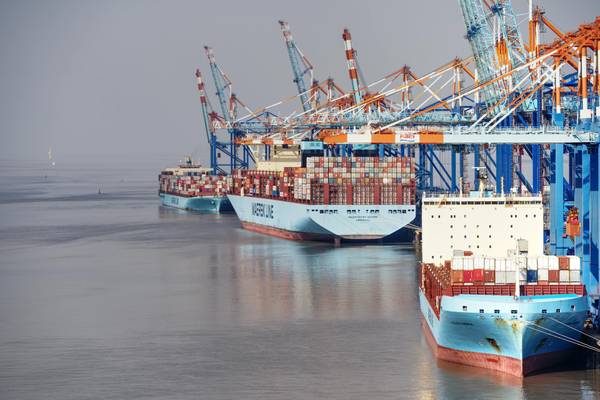
Top 5 Challenges Facing India’s Logistics Solutions Companies in 2024
India’s logistics sector is a vital cog in the wheel of its economic growth, contributing significantly to the country's GDP. With the government pushing for infrastructure development through initiatives like the Bharatmala project and the National Logistics Policy, the sector is poised for significant growth. However, several challenges continue to plague Logistics solution company in india. In 2024, five key challenges stand out: infrastructure bottlenecks, regulatory complexities, technological integration, environmental sustainability, and skilled labor shortages.
1. Infrastructure Bottlenecks
The Problem:
Despite significant investments in infrastructure, India still faces considerable bottlenecks that impede the efficiency of logistics operations. Inadequate road connectivity, congested urban areas, and underdeveloped rural regions create substantial hurdles.
Current Scenario:
While the Golden Quadrilateral and the North-South and East-West corridors have improved connectivity between major cities, last-mile connectivity remains a problem. Rural areas, which are crucial for agricultural supply chains, often suffer from poor road conditions and limited transportation options.
Solutions:
- Public-Private Partnerships (PPP): Encouraging PPPs to accelerate infrastructure development.
- Smart City Projects: Integrating logistics planning into urban development to reduce congestion.
- Multi-Modal Transport: Promoting the use of railways and waterways to alleviate road traffic.
2. Regulatory Complexities
The Problem:
The logistics sector in India is burdened with complex and often inconsistent regulations. Multiple checkpoints, varying state laws, and bureaucratic red tape increase transit times and costs.
Current Scenario:
Despite the introduction of the Goods and Services Tax (GST), which aimed to create a unified tax regime, logistical efficiency is still hampered by state-specific regulations and interstate check-posts.
Solutions:
- Single-Window Clearance: Implementing a single-window clearance system for all regulatory approvals.
- Harmonization of Laws: Ensuring uniformity in regulations across states.
- Digital Platforms: Using technology to streamline regulatory processes and reduce paperwork.
3. Technological Integration
The Problem:
The logistics industry is witnessing rapid technological advancements, from AI and IoT to blockchain and robotics. However, many companies struggle to integrate these technologies effectively.
Current Scenario:
While larger companies have begun adopting advanced technologies to improve efficiency and transparency, small and medium-sized enterprises (SMEs) often lack the resources and expertise to do so.
Solutions:
- Government Incentives: Providing subsidies and incentives for technology adoption.
- Training Programs: Establishing training programs to upskill the workforce in new technologies.
- Collaborative Platforms: Creating platforms where SMEs can share resources and best practices for technological integration.
4. Environmental Sustainability
The Problem:
The logistics sector has a significant environmental footprint, contributing to air pollution and greenhouse gas emissions. There is increasing pressure on companies to adopt sustainable practices.
Current Scenario:
While some companies have started investing in electric vehicles and green warehousing, the overall adoption of sustainable practices remains low due to high costs and lack of awareness.
Solutions:
- Green Logistics Certification: Introducing certification programs to encourage and recognize sustainable practices.
- Incentives for Green Practices: Offering tax breaks and subsidies for companies adopting eco-friendly technologies.
- Public Awareness Campaigns: Running campaigns to educate stakeholders about the benefits of sustainable logistics.
5. Skilled Labor Shortages
The Problem:
A shortage of skilled labor is a persistent issue in the logistics sector. The rapid technological advancements require a workforce that is not only physically adept but also technologically proficient.
Current Scenario:
The sector faces a dual challenge: attracting new talent and upskilling the existing workforce. The perception of logistics as a low-skilled job market further exacerbates the problem.
Solutions:
- Vocational Training: Developing comprehensive vocational training programs tailored to the logistics sector.
- Industry-Academia Collaboration: Partnering with educational institutions to create specialized courses and internships.
- Career Development Programs: Establishing clear career paths and development programs to attract and retain talent.
Conclusion
The Logistics solution company in india is at a pivotal juncture. While the challenges are significant, so are the opportunities. By addressing infrastructure bottlenecks, simplifying regulatory frameworks, embracing technological advancements, committing to environmental sustainability, and investing in skilled labor, logistics companies can overcome these hurdles. The combined efforts of the government, private sector, and academia will be crucial in driving the sector forward, ensuring that India’s logistics infrastructure can support its burgeoning economy in 2024 and beyond.